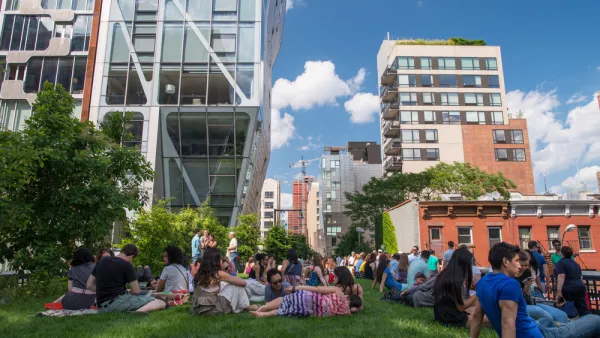Richard Florida discusses why "quality of place", rather than job opportunity, is the determining factor in where creative-minded people choose to live.
Although "quality of life" has been the traditional way in which the success of a community has been defined, Florida argues that "quality of place," a term he coined to capture "an interrelated set of experiences," better explains the attractiveness of a location. He believes that the creative class chooses where to live based not simply on jobs and services, but on a much wider range of "Territorial Assets" - comprising "what's there," "who's there," and "what's going on."
"Creative-minded people enjoy a mix of influences," writes Florida, "They want to hear different kinds of music and try different kinds of food. They want to meet and socialize with people unlike themselves, to trade views and spar over issues." He notes that "authenticity - as in real buildings, real people, real history - is key." The creative class wants a quality of place unique to the location, not "full of chain stores, chain restaurants, and chain nightclubs."
The openness to experience sought by creative-minded people reflects his contention that "what people want is not an either/or proposition. Successful places do not provide just one thing; they provide a range of quality-of-place options for different kinds of people at different stages in their lives." Florida uses New York City as an example of a successful place because young people, as they earn more and start families, can trade up from affordable, funky neighborhoods to more costly, even suburban, communities. "Members of the Creative Class come in all shapes, sizes, colors, ages, and lifestyles. To be truly successful, cities and regions must offer something for all of them."
FULL STORY: What Draws Creative People? Quality of Place

Analysis: Cybertruck Fatality Rate Far Exceeds That of Ford Pinto
The Tesla Cybertruck was recalled seven times last year.

National Parks Layoffs Will Cause Communities to Lose Billions
Thousands of essential park workers were laid off this week, just before the busy spring break season.

Retro-silient?: America’s First “Eco-burb,” The Woodlands Turns 50
A master-planned community north of Houston offers lessons on green infrastructure and resilient design, but falls short of its founder’s lofty affordability and walkability goals.

Test News Post 1
This is a summary

Analysis: Cybertruck Fatality Rate Far Exceeds That of Ford Pinto
The Tesla Cybertruck was recalled seven times last year.

Test News Headline 46
Test for the image on the front page.
Urban Design for Planners 1: Software Tools
This six-course series explores essential urban design concepts using open source software and equips planners with the tools they need to participate fully in the urban design process.
Planning for Universal Design
Learn the tools for implementing Universal Design in planning regulations.
EMC Planning Group, Inc.
Planetizen
Planetizen
Mpact (formerly Rail~Volution)
Great Falls Development Authority, Inc.
HUDs Office of Policy Development and Research
NYU Wagner Graduate School of Public Service



























